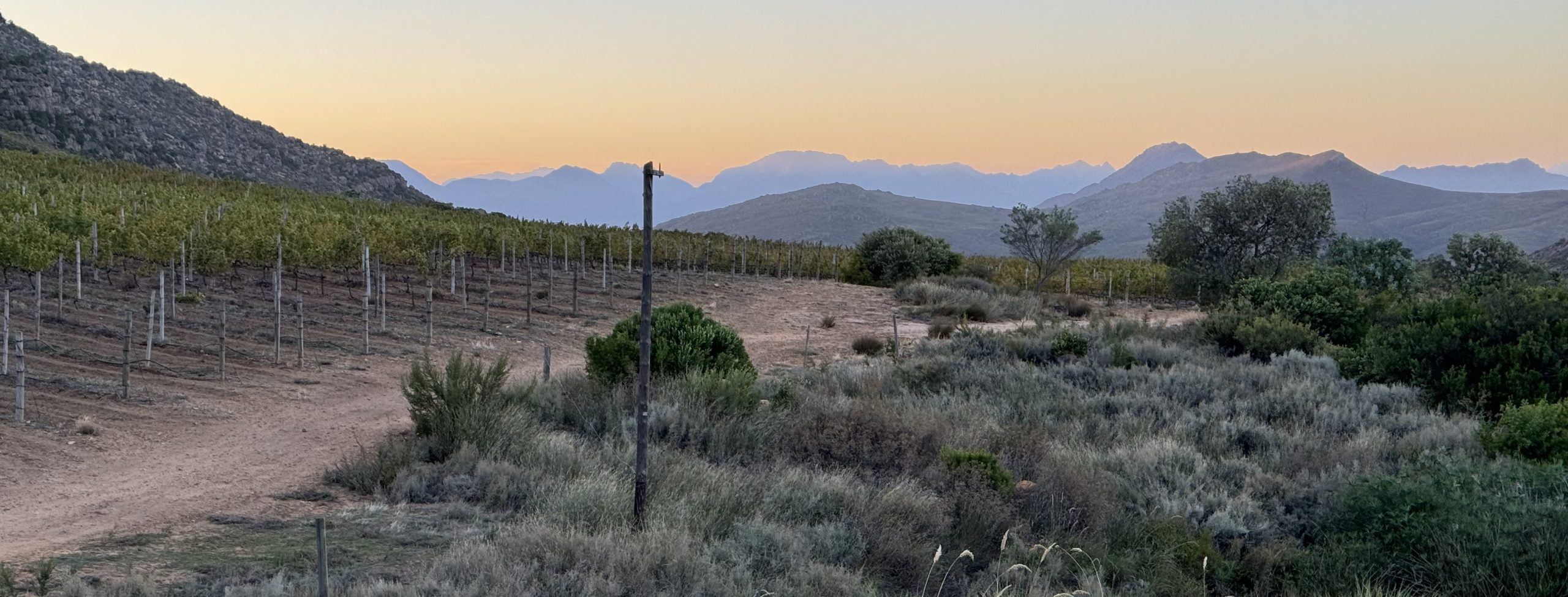
First, you have to get there…
The road to Piekenierskloof is an interesting one. Take the N7 out of Cape Town and head north for a couple of hours, skirting the towns of Malmesbury and Picketberg. Beyond there, the road starts to climb and wind up the slopes of the Piekenierskloof Pass. At the summit there’s a left turn. From this point onwards the road rises to the edge of the Cederberg Mountain range.
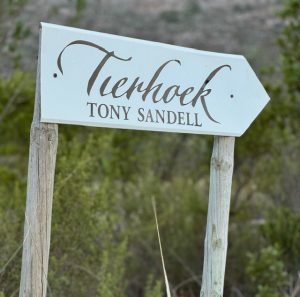 It’s here, after some thirty kilometres, that you find the modest sign directing you to Tierhoek. At an elevation is some 780 metres, you are now standing in one of the highest vineyards in the Western Cape.
It’s here, after some thirty kilometres, that you find the modest sign directing you to Tierhoek. At an elevation is some 780 metres, you are now standing in one of the highest vineyards in the Western Cape.
The farm extends over 715 hectares and takes its name after the Cape Leopard (Panthera Pardus Pardus) which roams these hills. Tierhoek literally translates from Afrikaans as tigers’ corner, since the early settlers confused leopards with the tigers they would have encountered on their travels across the Asian continent.
It’s a remote spot, cold, misty and rainy in winter, perhaps mixed with some snow too. Summers are long but tempered by the cool influence of the South Atlantic breeze, ensuring the resulting wines are bright, fresh and able to demonstrate incredible clarity.

Tierhoek is an extreme place to chance with viticulture. The previous owners of this original Sandveld farm had abandoned their old vineyards in favour of citrus, apricots, rooibos and buchu (or boegoe in Afrikaans or, to give it its scientific name: Agathosma betulina). Buchu is a traditional healing herb which is also part of the fynbos kingdom of plants. It is endemic to the south-western Cape. Rare and incredibly site-specific, its oil was once worth its weight in gold. It is said that one could trade a whole sheep for just one thimbleful of its unctuous extract.
Historically, the grapes from here would have been delivered down the mountain to the local Citrusdal co-operative where, at best, they would have been converted into a serviceable, if unexciting white wine which would have then been sold off to one of the large negociants. At worst, they would be committed for distillation, destined to be converted into cheap, local brandy.
The demise of the old co-op and a less unregulated industry, combined with the enthusiasm of the new generation of rock-star winemakers determined to source the best possible fruit, have certainly changed the fortunes of the Piekenierskloof within the past two decades.
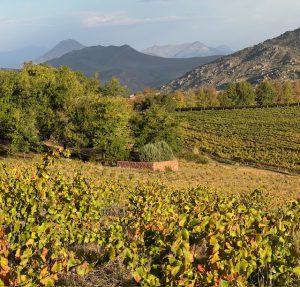
I first travelled the then dirt road to Piekenierskloof in late 2003. Intrigued by a story retold by Chris Williams and the promise of rediscovering some old, lost vineyard. What I found was a revelation; not only rehabilitated old vine Chenin but new plantings of Chardonnay and Sauvignon Blanc, with a smattering of Syrah, Grenache and Mourvèdre for good measure. Today, there are a total of 16.5ha of vines planted on the farm.
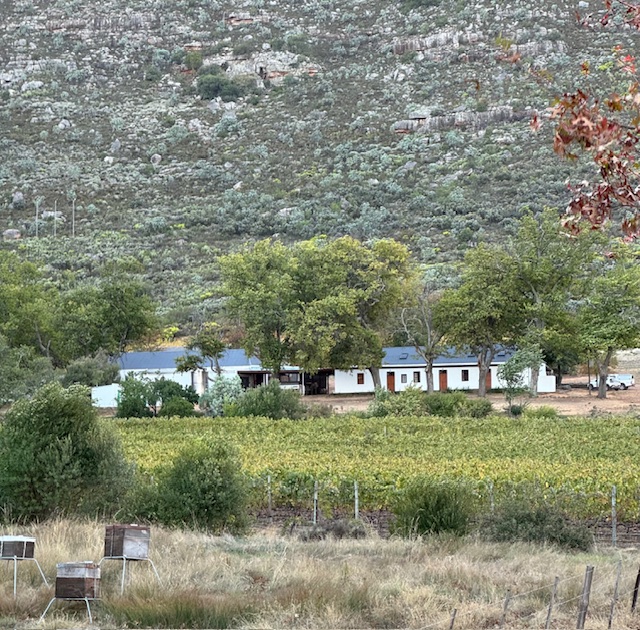
That’s when I first met Tony Sandell. He and his wife, Shelley, had purchased Tierhoek from the neighbouring (and feuding) Marais family in the early 2000s. The Sandells also owned another farm a little lower down the valley and Tony had always shown an interest in purchasing the property. What they bought was mostly neglected farmland and an original low Sandveld house, which Tony had already set about restoring.
Both Tony and Chris were into motorcycling and the reason they knew each other. So, it was only logical for Tony to approach Chris, inviting him to make the first vintage of Chenin Blanc from the original skuinskap trellised vines, planted back in 1977, and the same parcel that had been abandoned by the family Marais.
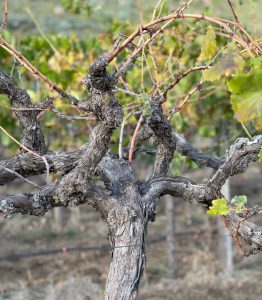 Chris agreed and the grapes were transported to Delaire in Stellenbosch where he was acting as consultant winemaker for the 2003 vintage. That’s where I first tasted the wine. It had just finished fermenting and was still in tank. Chris described the bunches as looking like ‘bonsai Chenin, with grapes no bigger than your little fingernail’… I was intrigued.
Chris agreed and the grapes were transported to Delaire in Stellenbosch where he was acting as consultant winemaker for the 2003 vintage. That’s where I first tasted the wine. It had just finished fermenting and was still in tank. Chris described the bunches as looking like ‘bonsai Chenin, with grapes no bigger than your little fingernail’… I was intrigued.
As a result of that tasting at Delaire and my initial meeting with Tony, we purchased most of the maiden vintage of Tierhoek Chenin Blanc.
Tony was a real entrepreneur. A borderline genius. He had set up his own company manufacturing roof windows in Cape Town in 1988, and he’d done very well for himself.
 He explained to me, in detail, his plans for the farm. Having rehabilitated the old vine Chenin, his mission now was to plant more vines, although he systematically ignored my several requests to plant some Riesling on this high, elevated site… The objective was to construct a cellar on the farm and employ a full-time vigneron. He also brought in a JCB digger onto the farm to excavate land for a dam, relocating several old Chenin vines in the process. That was in the autumn of 2007, and he was now waiting on the winter rains to come. We were taking bets as to how many weeks it would take to fill. The truth was it took a single afternoon…
He explained to me, in detail, his plans for the farm. Having rehabilitated the old vine Chenin, his mission now was to plant more vines, although he systematically ignored my several requests to plant some Riesling on this high, elevated site… The objective was to construct a cellar on the farm and employ a full-time vigneron. He also brought in a JCB digger onto the farm to excavate land for a dam, relocating several old Chenin vines in the process. That was in the autumn of 2007, and he was now waiting on the winter rains to come. We were taking bets as to how many weeks it would take to fill. The truth was it took a single afternoon…
Sadly, that was the last time I saw him. Tony never managed to realise his ambition. He died, at the age of 49, after a short illness. It was left to Shelley to take on the running of Tierhoek and help to realise Tony’s vision.
It would be fair to say that in the period since, the farm has struggled, both financially and in the ability to fulfil its promise of producing some of the Cape’s best wines. It’s clear that there is no issue with the potential of the site. One only needs to consider the list of winemaker clients who have been queuing up to access grapes grown on Tierhoek for the last decade or so.

Over twenty years later, the road to the farm might mostly be tarred, and the vineyards are now fully mature. I have always tried to make an annual pilgrimage up to meet with Shelley and, more recently with Tony and Shelley’s youngest son, Harry, to take a walk through the vineyards and taste the resulting wines.
It was on one such visit in October 2022 that I came up with an idea and made a proposal to Shelley. If the farm was happy to release grapes from the forthcoming 2023 harvest, I would call in a few favours and ask some of my winemaking friends to make a wine on Shelley’s behalf. There would be no risk to Tierhoek, since Dreyfus Ashby would commit to buying them, regardless of the outcome. Shelley agreed. I now had to call in those favours…
TIERHOEK, IN COLLABORATION WITH…
It was only logical to approach Chris Williams, given it was he who first made me aware of Tierhoek and, dare I say, to the existence of the Piekenierskloof as a region. Chris took up the challenge and elected to make some Chardonnay from a parcel of vines that had been planted in an old orange grove.

Lukas van Loggerenberg agreed to take in the red grapes, including Syrah, Grenache and Mourvèdre, with an open brief to either make a blend, or three individual single varietal wines. The 2023 vintage goes under the title of Panthera Pardus Pardus (after the Cape Leopard) and exists as a Rhône-style assemblage of the three varieties.
Finally, Chris Alheit, who had already enjoyed access to the fabled 1977 block as a component for the Alheit Vineyards Cartology, agreed to make us a dedicated Tierhoek Chenin Blanc.
What was set to be a one-vintage initiative has carried onto the 2024 vintage, with Lukas still taking in the red grapes, whilst Miles Mossop has taken on the challenge with the old vine Chenin as well as producing a barrel-fermented Sauvignon Blanc.
The 2024 vintage Chardonnay has been vinified by Emul Ross at Hamilton Russell Vineyards. Unknown to me at the time, Anthony Hamilton Russell was at school with Tony, so there was a coincidental connection. Still to be verified, but Emul believes this is the first time a third-party wine has ever been produced in the HRV cellar. We are grateful to Anthony for agreeing to allow Emul to vinify the Chardonnay on Shelley’s behalf.
We have also committed to buying the 2023 Sauvignon Blanc Straw Wine. Dried for three weeks on shade cloth before being pressed and vinified on the farm, the wine carries well over 200g/l residual sugar and enjoys an alcohol of just 8%.
Going forward, the objective is to continue the project with the option of rotating the collaborating winemakers. We are excited to see where this initiative might take us next…
| Tierhoek Chenin Blanc | packshot 2023 | label 2023 |
| Tierhoek Sauvignon Blanc | packshot 2024 | label 2024 |
| Tierhoek Chardonnay | pack shot 2023 | label 2023 |
| Tierhoek Sauvignon Blanc Straw Wine | pack shot 2023 | label 2023 |
| Tierhoek Panthera Pardus Pardus | pack shot 2023 | label 2023 |